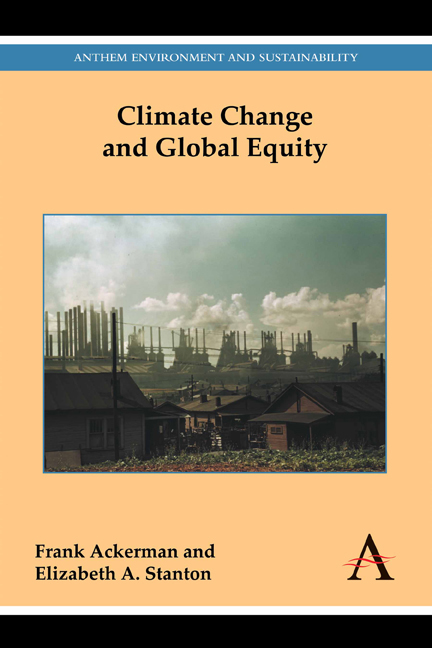Book contents
- Frontmatter
- Contents
- Introduction
- Publication History
- Part I Perspectives on Climate and Equity
- Part II Analyses of Climate Damages
- Chapter 5 Climate Impacts on Agriculture: A Challenge to Complacency?
- Chapter 6 Did the Stern Review Underestimate US and Global Climate Change?
- Chapter 7 Can Climate Change Save Lives? A Comment on “Economy-Wide Estimates of the Implications of Climate Change: Human Health”
- Part III Theory and Methods of Integrated Assessment
- Part IV Applications of Integrated Assessment Models
- Appendix Supplementary Data for Chapter 3
- Notes
- References
Chapter 5 - Climate Impacts on Agriculture: A Challenge to Complacency?
from Part II - Analyses of Climate Damages
Published online by Cambridge University Press: 03 November 2017
- Frontmatter
- Contents
- Introduction
- Publication History
- Part I Perspectives on Climate and Equity
- Part II Analyses of Climate Damages
- Chapter 5 Climate Impacts on Agriculture: A Challenge to Complacency?
- Chapter 6 Did the Stern Review Underestimate US and Global Climate Change?
- Chapter 7 Can Climate Change Save Lives? A Comment on “Economy-Wide Estimates of the Implications of Climate Change: Human Health”
- Part III Theory and Methods of Integrated Assessment
- Part IV Applications of Integrated Assessment Models
- Appendix Supplementary Data for Chapter 3
- Notes
- References
Summary
Unduly optimistic views of the impacts of climate change on agriculture, drawing on the research of the 1990s, have helped to justify relatively complacent approaches to climate policy. In the last decade, newer research has identified more ominous climate threats to agriculture – which should call for a revised perspective on climate policy. We review three categories of climate impacts on agriculture. Carbon fertilization, while still seen as a benefit to most crops, is now estimated to be smaller than in earlier research. The effect of temperature increases on crops is now recognized to involve thresholds, beyond which yields per hectare will rapidly decline. Finally, changes in precipitation can be crucial – not only in cases of drought, but also in subtler shifts in timing and intensity of rainfall. Response to the climate crisis in agriculture will require adaptation to inescapable near-term trends, via the creation of heat-resistant and drought-resistant crops and cultivars whenever possible. Yet unchecked climate change would quickly reach levels at which adaption is no longer possible; it is also urgent to reduce greenhouse gas emissions as rapidly as possible, to limit future climate-related damages.
Introduction: The Foundations of Inaction
Climate policies rely, explicitly or implicitly, on estimates of the damages that will be caused by climate change. This dependence is explicit when policy recommendations draw on the results of formal economic models. Such models typically weigh the costs of policy initiatives against the benefits. The costs of emission reduction are the incremental expenditures for renewable electricity generation, low-emission vehicles and the like, compared to more conventional investments in the same industries. The benefits are the future climate damages that can be avoided by emission reduction. The greater the expected damages, the more it is “worth” spending to avoid them. As explained below, many of the best-known and most widely used models are significantly out of date in their damage estimates, in agriculture among other areas.
Often, of course, policy decisions are not based on formal models or explicit economic analysis. Yet even when politicians and voters decide that climate action is simply too expensive, they may be relying on implicit estimates of damages.
- Type
- Chapter
- Information
- Climate Change and Global Equity , pp. 57 - 66Publisher: Anthem PressPrint publication year: 2014



